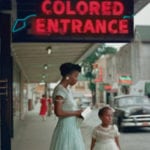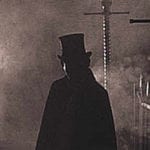 History
History  History
History  Technology
Technology Top 10 Everyday Tech Buzzwords That Hide a Darker Past
 Humans
Humans 10 Everyday Human Behaviors That Are Actually Survival Instincts
 Animals
Animals 10 Animals That Humiliated and Harmed Historical Leaders
 History
History 10 Most Influential Protests in Modern History
 Creepy
Creepy 10 More Representations of Death from Myth, Legend, and Folktale
 Technology
Technology 10 Scientific Breakthroughs of 2025 That’ll Change Everything
 Our World
Our World 10 Ways Icelandic Culture Makes Other Countries Look Boring
 Misconceptions
Misconceptions 10 Common Misconceptions About the Victorian Era
 Mysteries
Mysteries 10 Strange Unexplained Mysteries of 2025
 History
History 10 Things You Didn’t Know About the American National Anthem
 Technology
Technology Top 10 Everyday Tech Buzzwords That Hide a Darker Past
 Humans
Humans 10 Everyday Human Behaviors That Are Actually Survival Instincts
Who's Behind Listverse?

Jamie Frater
Head Editor
Jamie founded Listverse due to an insatiable desire to share fascinating, obscure, and bizarre facts. He has been a guest speaker on numerous national radio and television stations and is a five time published author.
More About Us Animals
Animals 10 Animals That Humiliated and Harmed Historical Leaders
 History
History 10 Most Influential Protests in Modern History
 Creepy
Creepy 10 More Representations of Death from Myth, Legend, and Folktale
 Technology
Technology 10 Scientific Breakthroughs of 2025 That’ll Change Everything
 Our World
Our World 10 Ways Icelandic Culture Makes Other Countries Look Boring
 Misconceptions
Misconceptions 10 Common Misconceptions About the Victorian Era
 Mysteries
Mysteries 10 Strange Unexplained Mysteries of 2025
10 Famous Depression-era Bank Robbers
The Great Depression began with the Wall Street crash in 1929, and lasted well into the following decades. At this time, unemployment in the USA had risen to 25% and many more people were resorting to crime. Historians have labelled the 1930s as the “Public Enemy” era; a time when a small minority of criminals stood out as being particularly notorious and were hunted determinedly by the police and FBI.
These criminals weren’t like the bank robbers of today; handing a note to a teller and escaping with $100, only to be caught the next day. These ruthless thieves would burst in and ransack the bank, usually forcing a manager to open the vault. They would commonly participate in gun battles with police, in which innocent bystanders were often killed. I have tried to rank in order of reputation and skill.
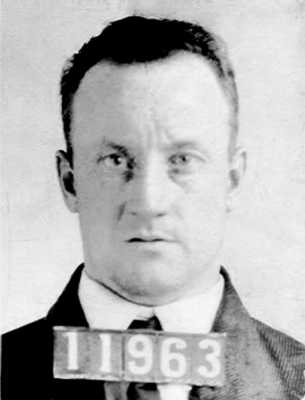
Hamilton began his criminal career by robbing a gas station in Indiana, and being sentenced to a very long prison term of 25 years. Whilst incarcerated, he began to associate with prominent bank robbers such as John Dillinger, Harry Pierpoint and Homer Van Meter. On September 26, 1933, a total of 10 men, including Hamilton, escaped using smuggled guns from the recently paroled John Dillinger.
Hamilton and the rest of the gang learned that Dillinger had been imprisoned in Allen County prison, in Lima, on bank robbery charges. The gang were determined to free him, but first they needed cash to fund the break out. The gang robbed the First Nation Bank, in St. Mary’s Ohio, escaping with $14,000. Hamilton attended the liberation at Lima Jail but did not enter the building, instead serving as a lookout.
Hamilton went on to commit a spree of chaotic, yet lucrative, bank robberies with the Dillinger gang. In January, 1934, the gang robbed a bank in Chicago escaping with $20,376. During the heist, a police officer was gunned down and Dillinger was officially charged with the murder, even though many witnesses named Hamilton as the shooter.
Hamilton was at the top of the public enemy list, whilst Dillinger and associate Harry Pierpoint were imprisoned. Dillinger broke out, however, and Hamilton joined him once again to commit more robberies. On April 23, 1934, the gang were confronted by police and, during a getaway, Hamilton was wounded and died shortly after. Dillinger buried his friend at the home of Volney Davis and Edna Murray.
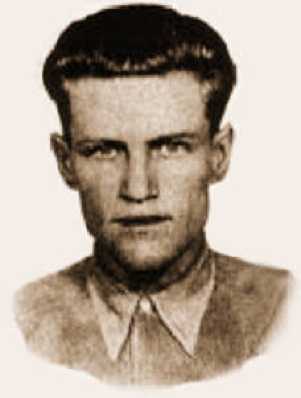
Volney Davis was the boyfriend of Edna “rabbits” Murray. The pair robbed banks together during the 1930s. He was also an associate of John Dillinger, Alvin Karpis and the Barker gang. He committed his first major robbery in the 1920s, burglarizing a hospital in Tulsa. The night watchman was murdered in this incident, and Davis was sentenced to life imprisonment. After a failed escape attempt, and after serving 7 years, he applied for a 20 month leave of absence which was granted. However, instead of returning to prison, he went on the run.
He reunited with girlfriend, and partner in crime, Edna Murray before joining Alvin Karpis and the Barker gang, who were at the peak of their criminal success. After many successful bank robberies and kidnappings, Davis was captured and charged with kidnapping. He was sentenced to life imprisonment and spent most of his adult life in Alcatraz.

Sutton was an accomplished bank robber, although he never carried a loaded gun and never killed anybody throughout his criminal career. He was nicknamed “slick” for the many disguises he wore on the job. For instance, he has robbed banks dressed as a maintenance man, a postman and a police officer.
He has also escaped from prison multiple times. The first time he was serving a 30 year sentence for robbery, he used a smuggled gun to hold a prison guard hostage, before using a ladder to scale the prison wall. After being apprehended again, he was sentenced to 50 years imprisonment. This time he escaped through a tunnel along with other convicts, although he was recaptured the same day. For his third escape, he dressed as a prison guard and carried a ladder to the prison wall at night; when the searchlight hit him he shouted: “it’s ok!” and nobody stopped him.
Sutton carried on his criminal career whilst on the run, but eventually ended up spending more than half his adult life in prison. Sutton was once asked by a reporter why he robbed banks. His reply was: “Because that’s where the money is”. However, this was invented by a reporter who never even interviewed Sutton. Sutton later answered the question, after admitting he never said the famous quote:
“Why did I rob banks? Because I enjoyed it. I loved it. I was more alive when I was inside a bank, robbing it, than at any other time in my life. I enjoyed everything about it so much that one or two weeks later I’d be out looking for the next job. But to me, the money was the chips, that’s all.”
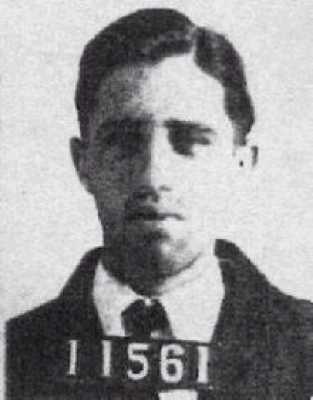
Homer Van Meter was a young member of John Dillinger’s gang, with a reputation for being particularly bloodthirsty. He took part in the Dillinger gang’s last bank raid, in which four innocent bystanders were murdered. During his first brief stint in prison, the director of research wrote the following:
“This fellow is a criminal of the most dangerous type. Moral sense is perverted and he has no intention of following anything but a life of crime … He is a murderer at heart, and if society is to be safeguarded, his type must be confined throughout their natural lives.”
As a young man, Van Meter became involved in crime after working as a waiter for a short while. He ended up being sentenced to a long prison term for a train robbery. Whilst in prison he tried to escape with another prisoner. The men beat a guard unconscious but were soon apprehended. As a punishment, Van Meter spent two months in solitary confinement where he was severely beaten by guards.
After serving seven years in prison, Van Meter was paroled. He aligned himself with Baby Face Nelson and Tommy Carroll to rob a Michigan bank, escaping with $30,000. The trio then proceeded to rob a bank in Minnesota for $32,000. These crimes labelled Van Meter 18th on the public enemies list. After linking up with the Dillinger gang, he participated in some other high profile bank robberies. In Indiana, Van Meter robbed a police station with Dillinger. The duo stole firearms and bullet proof vests. On August 23rd, 1934, Van Meter was ambushed by four police officers and brutally gunned down. He was shot dozens of times, and several of his fingers were blown off. At the time of his death, he was 27 years old.
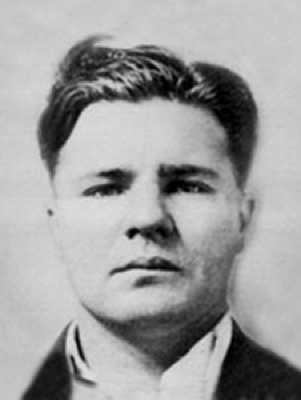
Floyd grew up in Oklahoma, and was first arrested at age 18, after stealing $3.50 from a post office. After participating in numerous small time robberies, he was eventually jailed for 5 years. When he was paroled he vowed to never see the inside of another prison. He began to associate with big time Kansas City mobsters. Over the next few years he participated in several bank robberies, and it was in this period that he acquired his nickname. A payroll master targeted in the robbery described Floyd as:
“A mere boy — a pretty boy with apple cheeks.”
The law eventually caught up with Floyd, and in 1930, he was arrested and charged with the robbery of the Sylvania Ohio Bank. He escaped from prison but was sentenced, in absentia, to 12-15 years behind bars. He remained on the run for three years before crashing his car in thick fog. He wasn’t hurt, but the car was disabled, and soon after he engaged in a chase with police. He fled into an apple orchard where he was shot and killed.
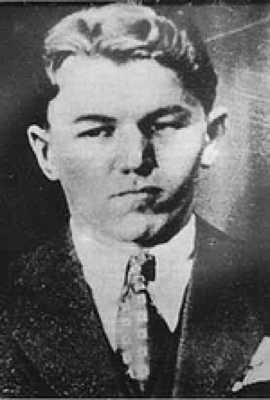
Baby Face Nelson was a prominent member of John Dillinger’s gang who, along with Homer Van Meter, had a particular reputation for violence. He has killed more FBI agents than any other single American citizen. He also participated in many high profile bank robberies until his death at the Battle of Barrington.
Nelson was arrested for theft and joyriding at age 13, and was sent to a penal school for 18 months. Later in life, Nelson became involved with some local gangsters, driving bootleg alcohol for them through the Chicago suburbs. These gangsters graduated into armed robbers and became known as the Tape Bandits, of which Nelson was a respected member. They would routinely rob fancy houses and steal jewelry. In April 1930, Nelson robbed his first bank and got away with $4000.
After robbing the wife of the Chicago mayor, he earned his nickname. The victim said: “He was good looking, hardly more than a boy. He had black hair and a baby face”. He committed his first murder when the Tape bandits robbed a tavern and he shot a stockbroker. Eventually, most of the Tape bandits were rounded up, including Nelson. He received a life sentence but escaped during a prison transfer.
After being on the run for two years, Nelson robbed his first major bank. The robbery was a near disaster though he still managed to make a clean getaway. After this, Nelson began to rob banks with Homer Van Meter and Eddie Green. During one robbery Nelson was reported to have sprayed innocent bystanders with machine gun bullets while screaming wildly. For a short while, Nelson was number one on the FBI list of public enemies. He was gunned down in the so called “Battle of Barrington”, but not before taking FBI agents Herman Hollis and Samuel P Cowley with him. At the time of his death, he was only 25 years old.
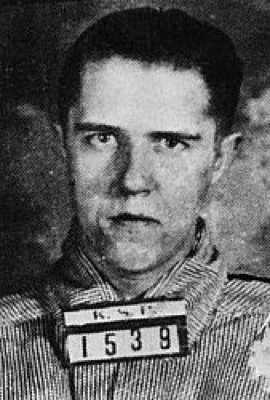
Karpis was raised in Kansas and began associating with criminals from an early age. He ran errands for gangsters when he was 10 years old, and soon garnered a reputation for reliability. When he was 19, he participated in a botched burglary and was imprisoned for 10 years. In prison he met Fred Barker who was serving a sentence for bank burglary. The Barker family were a notorious gang of siblings who robbed banks and killed without provocation. Karpis immediately joined them after he was paroled, and together they formed the Karpis-Barker gang. The gang soon became one of the most formidable in the country, brutally murdering anyone who stood in their way as they robbed banks, even innocent bystanders.
The gang even participated in kidnappings, however this proved to be their downfall. The father of a man who was kidnapped was friends with President Franklin D Roosevelt, and as a result the FBI stepped up their efforts greatly to foil this type of crime. Fred Barker and his mother were gunned down by the FBI in their homes, in 1935. Karpis nearly met his own violent death when the FBI located him in New Jersey. He managed to shoot his way to an escape, although his pregnant girlfriend was shot in the thigh.
Karpis continued his armed robbery career, although it became more and more difficult for him to escape capture. He was the last remaining public enemy, all the others having being captured or killed. A determined J Edgar Hoover had even vowed to personally arrest Karpis. Hoover wouldn’t have to wait long. In May 1936, the FBI located Karpis in New Orleans, and surrounded his car. He surrendered peacefully although no agents had brought any handcuffs, as they assumed Karpis would fight to the death. He was tied up with a necktie and eventually sentenced to life imprisonment, which he served in Alcatraz.
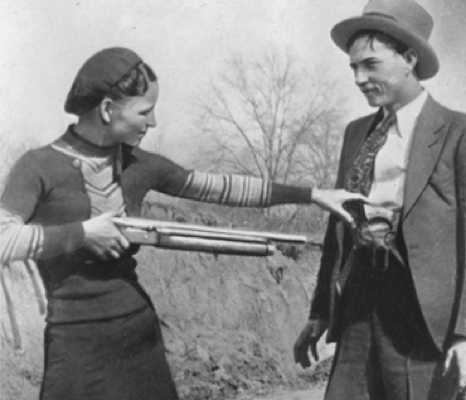
Bonnie Parker and Clyde Barrow are among the most famous outlaws in history. The pair robbed numerous banks as well as some gas stations and stores in rural areas. They killed at least nine people during their spree, including civilians. They often took photographs of themselves posing together with the weapons they used during armed robberies. These were shown in the newspapers to give the impression the duo were enjoying a lavish lifestyle, when in fact they lived under immense stress and were constantly on the run.
Parker first met Clyde Barrow at a friend’s house. Most historians agree she was completely smitten with him, and willingly joined him as his partner in crime. Barrow was imprisoned in 1927, for robbery of a gas station and it was here that he committed his first killing. A fellow inmate sexually assaulted him over the course of a year, until Clyde eventually cracked his skull with a metal bar. He was paroled in 1932, and began to commit small time robberies with Parker.
Parker was soon arrested during a botched robbery of a hardware store, although she was soon released having not been charged. Later, when Parker was visiting her mother, officers moved in to arrest her again, but Barrow and an associate gunned them down, committing what was Barrow’s first murder of a lawman. Barrow soon killed again, after a robbery at a grocery store where he shot the owner for showing resistance; during the robbery they stole just $28 and a few groceries.
The duo and their gang went on to rob numerous other stores and banks before their downfall. Clyde Barrow and Bonnie Parker were ambushed, in May 1934. A posse of rangers opened fire into Barrow’s stolen car as he approached, at high speed, down a rural Louisiana road. Barrow was killed instantly by a headshot and Parker, in the passenger seat, was sprayed with bullets soon afterwards. They were shot over 50 times, including numerous headshots on each corpse.
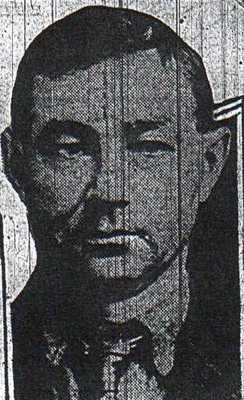
Herman “Baron” Lamm was a German American bank robber who is widely considered the father of modern bank robbery. He is renowned for his brilliant and efficient style, planning and executing robberies like military operations. He moved to America shortly before the outbreak of World War I, and became a hold up man; quickly adapting his military training, his study of tactics and his precision and discipline to the art of crime.
His bank robbery style became known as the “Lamm Technique”, and was widely imitated by other famous bank robbers, such as John Dillinger. The most famous aspect of the “Lamm Technique” was casing the bank before the robbery, and planning getaway routes so as to leave nothing to chance. Other aspects involved each gang member being assigned a job such “vault man”, “driver” or “lobby man”. He also put his men through rehearsals using full scale mock ups of the bank interior, and didn’t commit the actual robbery unless he felt sure his gang knew exactly what they were doing.
Baron Lamm died, aged 40, after a botched bank robbery when his gang crashed their getaway car. He was cornered by over 200 police, and shot himself in the head to avoid punishment. Two members of his gang survived and James “Oklahoma Jack” Clark went on to join the Dillinger gang after being imprisoned, though Dillinger told Clark he couldn’t join them unless he told him everything he knew about the “Lamm Technique”.
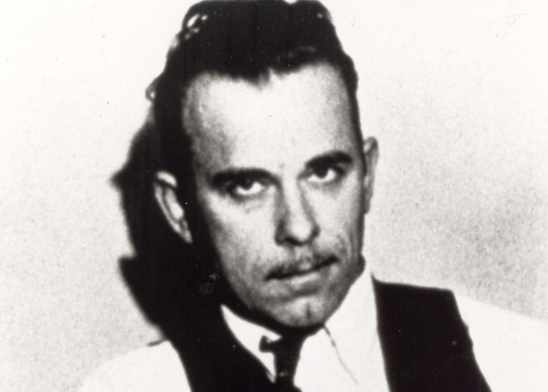
Among his associate criminals of his time, such as Baby Face Nelson, Homer Van Meter and John “Red” Hamilton, Dillinger was, by far, the most notorious. He was famous for his likable personality and charm. He would often flirt with female bank tellers whom he was robbing, and would also sometimes leap over the counter, a stunt he imitated from the movies. He was charged with the murder of a police officer during his criminal career, though many witnesses insisted John Hamilton performed the killing.
Dillinger was born in Indiana and originally had no ties to crime. As a young man he enlisted in the US Navy, but was dishonorably discharged after he deserted. He married Beryl Hovious, in 1924, but the marriage ended in divorce. After this he had difficulty holding down a job and began to plan a robbery with a friend. He was arrested after being recognized during the robbery and sentenced to 10 to 20 years imprisonment, which was a very harsh sentence, indeed, for a first time offender.
Whilst incarcerated he became embittered against society, and began to mix with notorious criminals such as Harry Pierpoint and James “Oklahoma Jack” Clark. He spent his time planning heists with his new found friends, that they would commit shortly after being released. Dillinger was paroled in 1933, at the height of the great depression, when a convicted criminal had almost no option of employment. He robbed a bank in Ohio, but was captured soon after.
Four days after his arrest, Dillinger oversaw the smuggling of weapons into his friend’s prison cells, and they escaped, but not before killing two guards. The escapees then travelled to Lima County jail to liberate Dillinger. They impersonated police officers, telling the Sheriff they had come to extradite Dillinger to Indiana. He asked for credentials, so they shot him and Dillinger escaped with them. The newly formed group of escapees became the first Dillinger gang.
Dillinger and his gang began a spree of bank robberies across Indiana, accumulating over $300,000 in total. During their spree, they killed around 13 lawmen, although Dillinger was never proven to have killed anyone. As the gang became notorious, Dillinger rose to the top of the list of Public Enemies, with other members of his gang filling out most of the top ten. His numerous prison escapes also added to his legend. After being arrested and imprisoned in the “escape proof” Lake County jail, Dillinger was able to use a carved wooden pistol to trick guards, and lock them in his cell. He also stole the Sheriff’s new Ford car to make his getaway.
His demise finally came when he attended the Biograph Theatre, in Chicago. After exiting the theatre the FBI were waiting for him and he was shot down as he tried to escape down a nearby alleyway. At the time of his death, he was 31 years old. Dillinger was portrayed by Jonny Depp in the 2009 film Public Enemies, though the film has some major inaccuracies, such as the timeline of deaths of Pretty Boy Floyd and Baby Face Nelson. In fact, Dillinger was one of the first in his gang to be killed.




